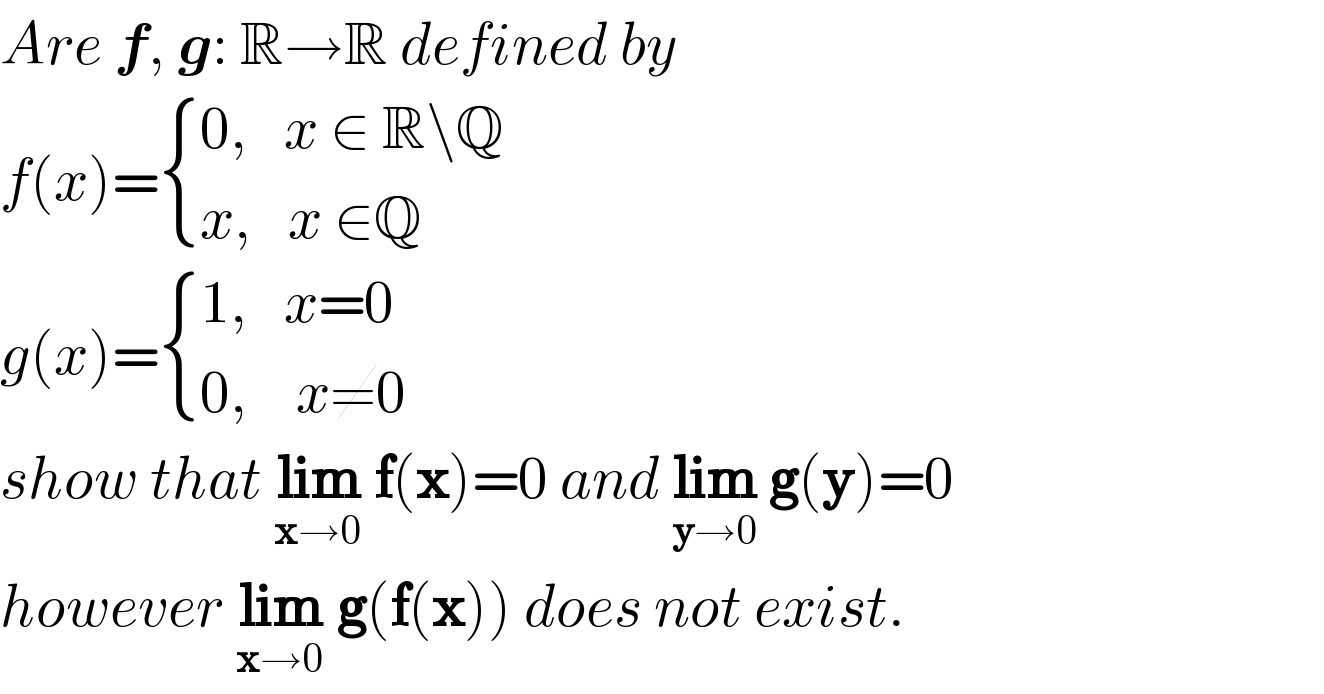
Question and Answers Forum
Question Number 62747 by Mikael last updated on 24/Jun/19

Answered by MJS last updated on 25/Jun/19
![x∈R\Q: lim_(x→0) f(x)=0 is trivial because f(x)=0 in this case x∈Q: lim_(x→0) f(x)=lim_(p→0) (p/q) ∀p∈Z∧∀q∈N^★ ⇒ ⇒ lim_(x→0) f(x)=lim_(p→0) (p/q)=0 lim_(x→0) g(x)=0 because g(x)=0 for x∈[−ε; ε]∀ε∈R^+ lim_(x→0) g(f(x)) does not exist because ∀x∈R\Q g(f(x))=1 but ∀x∈Q g(f(x))=0 ⇒ ⇒ lim_(x∈R\Q→0) g(f(x))=1 ∧ lim_(x∈Q→0) g(f(x))=0 ⇒ limit ∀x∈R doesn′t exist](Q62783.png)
Commented by Mikael last updated on 25/Jun/19

| ||
Question and Answers Forum | ||
Question Number 62747 by Mikael last updated on 24/Jun/19 | ||
 | ||
Answered by MJS last updated on 25/Jun/19 | ||
![x∈R\Q: lim_(x→0) f(x)=0 is trivial because f(x)=0 in this case x∈Q: lim_(x→0) f(x)=lim_(p→0) (p/q) ∀p∈Z∧∀q∈N^★ ⇒ ⇒ lim_(x→0) f(x)=lim_(p→0) (p/q)=0 lim_(x→0) g(x)=0 because g(x)=0 for x∈[−ε; ε]∀ε∈R^+ lim_(x→0) g(f(x)) does not exist because ∀x∈R\Q g(f(x))=1 but ∀x∈Q g(f(x))=0 ⇒ ⇒ lim_(x∈R\Q→0) g(f(x))=1 ∧ lim_(x∈Q→0) g(f(x))=0 ⇒ limit ∀x∈R doesn′t exist](Q62783.png) | ||
| ||
Commented by Mikael last updated on 25/Jun/19 | ||
 | ||